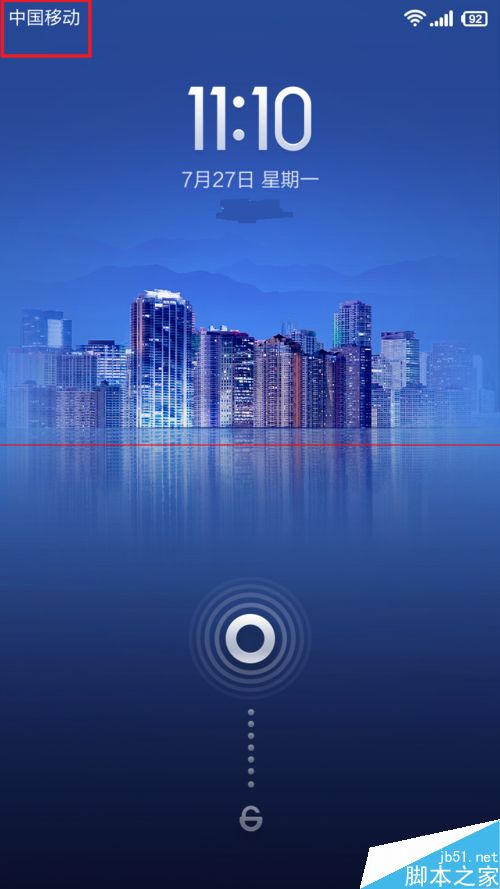天天信息:OneFlow源码解析:算子指令在虚拟机中的执行
撰文|郑建华、赵露阳
1
Op在虚拟机里的执行
1.1 PhysicalRun和InstructionsBuilder
上一篇文章《OneFlow源码解析:Op、Kernel与解释器》中提到:
 (资料图片)
(资料图片)
这个PhysicalRun函数里包裹着一个lambda函数:
JUST(PhysicalRun([&](InstructionsBuilder* builder) -> Maybe
其中,lambda函数接受一个InstructionsBuilder指针(builder),并调用builder->Call方法,用于实际完成Op指令在VM中的构建。而PhysicalRun(https://github.com/Oneflow-Inc/oneflow/blob/88f147d50e75d1644e552ed445dd58f9b5121ea5/oneflow/core/framework/instructions_builder.h#L160)在 oneflow/core/framework/instructions_builder.h中定义,其接受lambda函数作为模版参数(CallbackT):
// Make VM instructions with instruction builder and run instructions with physical/local view.template
可见,PhysicalRun函数中,首先初始化一个InstructionsBuilder,然后将InstructionsBuilder指针作为参数传给lambda函数,完成实际指令的构建;最后通过vm::Run()方法将该指令发送至VM,等候VM实际调度和执行。Run方法如下:
Maybe
可以看见,Run()方法获取了全局单例的VM对象指针,然后通过vm的Receive()方法,将该条指令发送给虚拟机(所以这里Run其实有点歧义,更贴切的意思,其实是指令发送或传送)。
这个VirtualMachine->Receive方法很重要,会在后面的第2.章节中详细展开。
1.2 InstructionsBuilder
上面PhysicalRun函数中的InstructionsBuilder,类似一个指令构建的helper,InstructionsBuilder的系列方法配合指令策略(InstructionPolicy),可以帮助构建不同类型的vm指令。
从InstructionsBuilder
(https://github.com/Oneflow-Inc/oneflow/blob/88f147d50e75d1644e552ed445dd58f9b5121ea5/oneflow/core/framework/instructions_builder.h#L47)的定义中,我们可以看到指令的构建方法,其中常用方法如下:
// 用于lazy mode(nn.Graph)// Build VM execution instructions with NNGraph"s inputs/outputs/parameters for NNGraph execution.Maybe
1.3 InstructionPolicy
InstructionPolicy
(https://github.com/Oneflow-Inc/oneflow/blob/88f147d50e75d1644e552ed445dd58f9b5121ea5/oneflow/core/vm/instruction_policy.h#L34)——指令策略,通常用于配合InstructionsBuilder实际构建出不同的vm指令。InstructionPolicy的子类实现如下:
这些子类的InstructionPolicy可近似认为是指令类型。如,用于Op执行的OpCallInstructionPolicy、用于Tensor内存释放的ReleaseTensorInstructionPolicy、用于屏障阻塞的BarrierInstructionPolicy等。
以Op执行为例:
JUST(PhysicalRun([&](InstructionsBuilder* builder) -> Maybe
实际上是通过InstructionsBuilder的Call方法
(https://github.com/Oneflow-Inc/oneflow/blob/88f147d50e75d1644e552ed445dd58f9b5121ea5/oneflow/core/framework/instructions_builder.cpp#L355),配合OpCall的指令策略(OpCallInstructionPolicy),构造了OpCall指令:
Maybe
并将构建好的指令塞入指令列表,待后续VM调度并实际执行。
2
虚拟机的运行原理
2.1 VM初始化
OneFlow环境初始化时,会触发VirtualMachineScope
(https://github.com/Oneflow-Inc/oneflow/blob/88f147d50e75d1644e552ed445dd58f9b5121ea5/oneflow/core/vm/virtual_machine_scope.cpp#L24)的初始化:
VirtualMachineScope::VirtualMachineScope(const Resource& resource) { Singleton
进而触发VM对象——VirtualMachine
(https://github.com/Oneflow-Inc/oneflow/blob/88f147d50e75d1644e552ed445dd58f9b5121ea5/oneflow/core/vm/virtual_machine.cpp#L81)的初始化。VM作为一个Singleton对象,全局唯一。
VirtualMachine::VirtualMachine() : disable_vm_threads_(false), scheduler_stopped_(false) { // Class VirtualMachineEngine only cares the basic logical of vm, while class VirtualMachine // manages threads and condition variables. // In order to notify threads in VirtualMachineEngine, a notify callback lambda should be take as // an argument for VirtualMachineEngine"s constructor. engine_ = intrusive::make_shared
VM初始化中最重要的内容,便是:
1.初始化了一个VM的执行引擎——VirtualMachineEngine
2.通过VirtualMachine::ScheduleLoop启动了VM的调度线程
VirtualMachine::ScheduleLoop
VM对象只负责条件变量和线程管理;而主要业务逻辑处理(包括指令构建、调度、派发和执行等),则由VirtualMachineEngine
(https://github.com/Oneflow-Inc/oneflow/blob/88f147d50e75d1644e552ed445dd58f9b5121ea5/oneflow/core/vm/virtual_machine_engine.h#L47)对象负责;VM初始化时还开辟了单独的schedule线程用于VM引擎处理调度逻辑,在VirtualMachine::ScheduleLoop
(https://github.com/Oneflow-Inc/oneflow/blob/88f147d50e75d1644e552ed445dd58f9b5121ea5/oneflow/core/vm/virtual_machine.cpp#L292)中:
void VirtualMachine::ScheduleLoop(const std::function
ScheduleLoop是一个近似于busy loop的while循环,pending_notifier_是VM内部维护的成员,实际上是ScheduleLoop线程的通知/唤醒者,其定义位于oneflow/oneflow/core/common/notifier.h:
class Notifier final { public: OF_DISALLOW_COPY_AND_MOVE(Notifier); Notifier() : notified_cnt_(0), is_closed_(false) {} ~Notifier() = default; NotifierStatus Notify(); NotifierStatus WaitAndClearNotifiedCnt(); void Close(); private: size_t notified_cnt_; std::mutex mutex_; bool is_closed_; std::condition_variable cond_;};
其主要维护了互斥锁mutex_、线程是否关闭的flag is_closed_、条件变量cond_。忽略线程唤醒、超时相关逻辑,ScheduleLoop中最重要的事情是engine_->Schedule(schedule_ctx);
while (pending_notifier_.WaitAndClearNotifiedCnt() == kNotifierStatusSuccess) { auto start = std::chrono::steady_clock::now(); ... do { do { ... engine_->Schedule(schedule_ctx); ... } while (!engine_->SchedulerThreadUnsafeEmpty()); } while (MicrosecondsFrom(start) < kWorkingMicroseconds); }
当VM维护的指令队列不为空时,便不断唤醒VM引擎执行指令调度逻辑——engine->Schedule()
2.2 VM指令调度
void VirtualMachineEngine::Schedule(const ScheduleCtx& schedule_ctx) { // Release finished instructions and try to schedule out instructions in DAG onto ready list. if (unlikely(mut_active_stream_list()->size())) { ReleaseFinishedInstructions(schedule_ctx); } // Try run the first barrier instruction. if (unlikely(mut_barrier_instruction_list()->size())) { TryRunBarrierInstruction(schedule_ctx); } // Handle pending instructions, and try schedule them to ready list. // Use thread_unsafe_size to avoid acquiring mutex lock. // The inconsistency between pending_instruction_list.list_head_.list_head_.container_ and // pending_instruction_list.list_head_.list_head_.size_ is not a fatal error because // VirtualMachineEngine::Schedule is always in a buzy loop. All instructions will get handled // eventually. // VirtualMachineEngine::Receive may be less effiencient if the thread safe version // `pending_instruction_list().size()` used here, because VirtualMachineEngine::Schedule is more // likely to get the mutex lock. if (unlikely(local_pending_instruction_list().size())) { HandleLocalPending(); } else if (unlikely(pending_instruction_list().thread_unsafe_size())) { // MoveTo is under a lock. mut_pending_instruction_list()->MoveTo(mut_local_pending_instruction_list()); if (local_pending_instruction_list().size()) { HandleLocalPending(); } } // dispatch ready instructions and try to schedule out instructions in DAG onto ready list. if (unlikely(mut_ready_instruction_list()->size())) { DispatchAndPrescheduleInstructions(schedule_ctx); } // handle scheduler probes if (unlikely(local_probe_list_.size())) { HandleLocalProbe(); } else if (unlikely(probe_list_.thread_unsafe_size())) { probe_list_.MoveTo(&local_probe_list_); if (local_probe_list_.size()) { HandleLocalProbe(); } }}
VM引擎维护了一系列指令列表的成员:
InstructionMutexedList pending_instruction_list_;// local_pending_instruction_list_ should be consider as the cache of pending_instruction_list_.InstructionList local_pending_instruction_list_;ReadyInstructionList ready_instruction_list_;LivelyInstructionList lively_instruction_list_;BarrierInstructionList barrier_instruction_list_;
pending相关的instruction_list是悬挂/待处理的指令列表;
lively相关的instruction_list是活跃的正在执行中的指令列表;
ready相关的instruction_list则是已完成准备工作(指令融合、指令DAG构建等)待执行的指令列表;
VM引擎Schedule时,会对指令队列做相应处理,包括:
将已完成准备工作的指令放入ready_instruction_list_中维护;
尝试运行barrier指令列表(barrier_instruction_list_)中的第一条指令;
如果本地pending指令列表(local_pending_instruction_list_)非空,则通过HandleLocalPending方法处理这些悬挂指令(指令融合、指令执行DAG图构建、插入ready列表)
如果ready指令列表非空,则通过DispatchAndPrescheduleInstructions方法进行指令派发和预调度处理。
这里重点介绍指令派发相关的DispatchAndPrescheduleInstructions方法,其中DispatchAndPrescheduleInstructions中最主要的是就是DispatchInstruction指令派发方法,这里的指令派发可以认为实际上就是指令执行。
2.3 VM指令派发
VirtualMachineEngine::DispatchInstruction
(https://github.com/Oneflow-Inc/oneflow/blob/88f147d50e75d1644e552ed445dd58f9b5121ea5/oneflow/core/vm/virtual_machine_engine.cpp#L372)方法是vm引擎中的核心,其实际完成了指令的派发和实际执行,代码如下:
template
DispatchInstruction的核心主要有2块:
执行指令的Prepare
执行指令的Compute
Prepare负责一些指令执行前的准备;Compute则是实际的指令执行,指令执行并不是直接通过instruction->Run而是在StreamPolicy的Run方法中完成的,这里又涉及到一个StreamPolicy对象。
StreamPolicy::Run
StreamPolicy
(https://github.com/Oneflow-Inc/oneflow/blob/88f147d50e75d1644e552ed445dd58f9b5121ea5/oneflow/core/vm/stream_policy.h#L46)是个虚基类:
class StreamPolicy { public: virtual ~StreamPolicy() = default; virtual ep::Stream* stream() = 0; virtual vm::Allocator* mut_allocator() = 0; virtual DeviceType device_type() const = 0; virtual void InitInstructionStatus(const Stream& stream, InstructionStatusBuffer* status_buffer) const = 0; virtual void DeleteInstructionStatus(const Stream& stream, InstructionStatusBuffer* status_buffer) const = 0; virtual bool QueryInstructionStatusDone(const Stream& stream, const InstructionStatusBuffer& status_buffer) const = 0; virtual void Run(Instruction* instruction) const = 0; virtual bool OnSchedulerThread(StreamType stream_type) const; virtual bool SupportingTransportInstructions() const = 0; protected: StreamPolicy() = default;};
stream()方法返回ep::Stream指针,指向的是针对不同平台的ep::stream对象。
mut_allocator()方法返回一个vm的Allocator指针,用于内存分配/释放。
InitInstructionStatus/QueryInstructionStatusDone/DeleteInstructionStatus用于创建/查询/销毁指令执行状态
Run方法则是核心,定义了该Stream具体运行时的逻辑。
StreamPolicy相关的继承和子类如下:
看一下EpStreamPolicyBase的Run方法(https://github.com/Oneflow-Inc/oneflow/blob/88f147d50e75d1644e552ed445dd58f9b5121ea5/oneflow/core/vm/ep_stream_policy_base.cpp#L41):
void EpStreamPolicyBase::Run(Instruction* instruction) const { ... auto* stream = instruction->mut_stream(); EpStreamPolicyBase* ep_stream_policy_base = dynamic_cast
首先获取了该stream对应的ep device,然后执行了instruction的Compute方法,即指令的实际执行。
2.4 VM执行执行
以OpCall指令为例,看一下op指令的Compute
(https://github.com/Oneflow-Inc/oneflow/blob/88f147d50e75d1644e552ed445dd58f9b5121ea5/oneflow/core/vm/op_call_instruction_policy.cpp#L201):
void OpCallInstructionPolicy::Compute(vm::Instruction* instruction) { OpCallInstructionUtil::Compute(this, instruction);}
OpCallInstructionPolicy方法调用了OpCallInstructionUtil的Compute方法:
上面我们可以看到,在指令Prepare时,做了output tensor内存分配;而指令Compute中最重要的方法是:
TryInitOpKernelStateAndCache——初始化一些kernel计算需要的状态或缓存
OpKernelCompute——执行该op对应的kernel,kernel内主要是实际的op计算逻辑
user kernel统一位于:oneflow/user/kernels目录下,.cpp通常对应cpu kernel逻辑;.cu为cuda kernel逻辑。到这里,就会触发user_kernel的Compute方法,不同op的kernel计算逻辑不同,以rele op为例,实际Compute过程可参考文章《算子在深度学习框架中的执行及interpreter》的第5小节。
2.5 VM指令发送
这里的VM指令发送,指的是VM外部的指令发送过程(不是VM内部的指令派发)。上面2.1~2.3小节介绍了VM以及VM引擎的初始化、VM内部指令的调度、派发和实际执行的过程,那么这些指令是如何发送到VM的呢?答案是:在1.1小节中提到的PhysicalRun
PhysicalRun最终会触发VirtualMachine->Receive方法,并通过VirtualMachineEngine的Receive方法完成外部指令 -> VM内部的发送。
VirtualMachineEngine的Receive方法(https://github.com/Oneflow-Inc/oneflow/blob/88f147d50e75d1644e552ed445dd58f9b5121ea5/oneflow/core/vm/virtual_machine_engine.cpp#L400)主要将该指令通过MoveFrom方法push back到指令悬挂列表(pending_instruction_list_)的末尾,从而完成指令的发送。
// Returns true if old scheduler_pending_instruction_list is emptyMaybe
3
小结
至此,Op执行相关的流程算是大体串了一遍。一句flow.relu()后面会涉及这么多内容。但这里其实也只关注了主干逻辑,忽略了中间大量的细节。
流程的梳理只是第一步,还需要从中归纳总结一些概念和概念之间的关系,再结合公开资料反推印证设计理念的落地实现。
不过目前对代码和设计的了解还很肤浅,下面的内容纯属大胆猜测。
3.1 UserOpExpr
UserOpExpr表示UserOp执行时所需的上下文,其实UserOp只是Op中的一种。下图展示了不同Op的继承关系。可以看到tensor从local/global之间的转换等也都涉及不同的OpExpr。
3.2 Op执行的宏观脉络
从上面的类关系图出发,以核心类为节点,也能看出Op执行流程的宏观脉络。整个流程大体在下面这些角色之间流转:
ReluFunctor
UserOpExpr
Interpreter
PhysicalRun
VirtualMachine->Receive
VirtualMachine->ScheduleLoop ...
3.3 虚拟机运行和调度总结
VM -> ScheduleLoop
VM引擎Schedule
处理悬挂指令(HandleLocalPending)
指令派发(DispatchInstruction)
准备(instruction->Prepare)
执行(StreamPolicy.Run -> instruction->Compute)
指令预调度
VM -> Receive
VM引擎 -> Receive
指令入悬挂列表
通常,我们习惯在动态图模式下训练深度学习网络,使用Python搭建网络,并通过各种op进行前向、反向、loss计算、调试debug等过程,这些Python代码可以看作是动态的op的执行序列。
OneFlow虚拟机将op执行序列抽象成了各种VM指令序列。OneFlow的虚拟机会对这些op执行序列进行动态翻译并生成VM指令序列,通过PhysicalRun构造完毕后,动态地将指令发送至VM的悬挂列表中维护。这些指令或在时间上存在先后顺序,或在数据上存在依赖关系,所以悬挂列表中的指令后续会被虚拟机进行一些指令融合、指令连边、动态构建指令DAG图的过程,然后移入就绪列表中维护,等待虚拟机调度并实际执行。虚拟机负责维护若干个指令队列,以及指令在这些队列之间的状态转换。
OneFlow虚拟机还统一了动态图模式(Eager Mode)和静态图模式(Lazy Mode)。静态图模式下,通过nn.Graph编译出深度学习网络的Job,这个Job同样被虚拟机抽象成了VM指令并接受虚拟机的调度和执行。大胆猜测一下,这也为日后动静转换、更极致的性能优化埋下了伏笔。
参考资料
从OpExprInterpreter到OpKernel
动态调度的“诅咒”| 原有深度学习框架的缺陷③
算子在深度学习框架中的执行及interpreter
OneFlow源码:
https://github.com/Oneflow-Inc/oneflow/tree/88f147d50e75d1644e552ed445dd58f9b5121ea5
其他人都在看
OneFlow v0.8.0正式发布
18张图,直观理解神经网络、流形和拓扑
OneFlow源码解析:Op、Kernel与解释器
Geoffrey Hinton:深度学习的下一个大事件
分布式深度学习编程新范式:Global Tensor
LLVM之父:为什么我们要重建AI基础设施软件
大模型训练难?效率超群、易用的“李白”模型库来了
欢迎体验OneFlow v0.8.0:GitHub - Oneflow-Inc/oneflow: OneFlow is a deep learning framework designed to be user-friendly, scalable and efficient.OneFlow is a deep learning framework designed to be user-friendly, scalable and efficient. - GitHub - Oneflow-Inc/oneflow: OneFlow is a deep learning framework designed to be user-friendly, scalable and efficient.https://github.com/Oneflow-Inc/oneflow/
- 环球实时:高通8064怎么样 高通8064性能介绍
- 世界今头条!ivvi i3怎么样?ivvi i3首发评测
- 世界热点评!显卡bios如何设置 显卡bios设置介绍
- 今日精选:三星e2220怎么样
- 环球动态:3g网络是什么意思 3g网络和4g网络的区别
- 世界速讯:加湿器使用有什么利弊 加湿器作用及危害
- 环球百事通!iPhone6照片流是什么有什么用?
- 天天新资讯:联想thinkpadx300怎么样?联想thinkpadx300最新报价是多少?
- 天天观察:kuaidial ios8官方源地址在哪里?kuaidial官方源ios8地址及安装事项
- 今日热搜:苹果手机怎么激活?苹果新机激活方法与步骤详细图文介绍
- OPPO智能摄像头新品将可实现全景移动追踪 还有一键呼叫功能
- 当前头条:苹果手机产品介绍详情
- 三星Galaxy Watch5智能手表发布 搭载三星Exynos W920处理器
- 【环球播资讯】联想x100e怎么样 联想x100e配置介绍
- 全球热消息:华为nova青春版和华为nova有什么不同?华为nova标准版和青春版全面区别对比评测
- 全球消息!苹果13Pro国行和港版有什么区别 苹果13pro怎么看是不是国行
- 倪飞安利努比亚Z40S Pro 努比亚Z40S Pro采用6.67英寸窄边框直屏
- 每日速读!电脑开机速度慢的几个需要优化的地方
- 【天天时快讯】小米手机变身电视盒子攻略
- 天天快消息!什么是光圈?手机摄像头的光圈是不是越大越好?
- Redmi K50至尊版搭载5000mAh大电池 采用最新一代发光材料
- 微资讯!iphone4主题安装及winterboard美化软件使用
- 世界观点:iPhone6 App闪退的解决办法 掌握这4点苹果App不再闪退
- 小米MIXFold2预热新机铰链技术:转轴宽度更短可使机身更轻薄
- 观速讯丨自动拨号上网的设置方法
- OPPO Pad Air新配色“紫霞”发布 配备一块10.36英寸2K高清大屏
- 最新消息:酷派5951手机做工怎么样 酷派5951拆机评测图解
- 环球即时:iOS9.2.1正式版升级需要多大空间 更新升级iOS9.2.1需要占用多大内存
- 世界报道:电脑关不了机是怎么回事
- 环球观天下!gbp是什么货币
- 全球实时:外置闪光灯有什么用 外置闪光灯作用及使用方法
- 小米新旗舰MIX Fold 2售价曝光 该机搭载骁龙8+ Gen1处理器
- 微头条丨联想g430怎么样 联想g430的评测
- 简讯:iOS11 Beta10怎么降级到ios11 beta9?苹果iOS11 Beta10降级方法详解
- 天天热讯:iphone6大约多少钱 iphone6价格是上涨还是下降
- 头条焦点:如何给手机图片、照片加动感MV歌词?
- 信息:3500元买什么手机好 3500元左右的高端智能手机推荐
- 简讯:空调蒸发器原理是什么
- 新资讯:三星Note4配置参数、报价及上市时间详解
- 全球百事通!怎么查询手机号码查询机主姓名?手机号码查询机主方法
- 天天快报!微软 Lumia950XL和950哪个手机好? Lumia950和950XL区别对比评测
- 三星新一代翻盖折叠屏Galaxy Z Flip 4发布 支持OIS光学防抖
- 世界观察:酷派锋尚Max手机怎么样 coolpad锋尚Max全方位详细评测
- 世界快看:华为d3和d2哪个好?华为d3和华为d2配置对比评测教程
- 精选!三星S6/S6 edge国内发布会时间地点确定:3月31日于北京
- 天天快看:nubia 布拉格S手机怎么样 nubia 布拉格S图文详细评测
- 三星首发骁龙8+折叠屏Galaxy Z Fold4 新机支持120Hz高刷
- 新消息丨努比亚Z5mini怎么截屏 努比亚Z5mini两种截屏方法介绍
- 全球热点评!iPhone6与iPhone5s手机外观对比图文介绍
- 环球观察:oppo R15x和oppo R15有什么区别?oppo R15x和oppo R15区别对比
- 全球看点:苹果iOS9.3.5可以越狱了吗?苹果iOS9.3.5越狱图文教程
- 三星Galaxy Z Fold4真机图赏 支持25W有线和10W无线充电
- 卢伟冰秀Redmi K50至尊版续航32小时 获得比2K分辨率更低的功耗
- 鼎桥TD Tech M40高配版今日首销 搭载联发科天玑1000+处理器
- 微博CEO吐槽iPhone数字电量 你觉得苹果这次的升级怎么样?
- 黄仁勋全力清RTX 30库存 声称NV的基本面依然强劲
- 中国成功发射一箭十六星 任务是长征系列运载火箭第432次飞行
- 苹果14涨价让国内黄牛狂喜 iPhone 14 Pro Max预计售价9999元起步
- 五菱新能源全球化之旅正式启程 历时五年更解锁百万销量成就
- 天天视点!机构:上半年中国智能机SoC终端出货量1.34亿颗,同比下降16.9%
- 网易云音乐用户主页已标明IP属地 音乐评论区或稍后加入显示
- 重点聚焦!1Password重新设计 PC功能带到手机
- 新报告显示苹果头显设备有望采用OLEDoS技术 并由LG提供
- 观点:i9-13900K太凶猛!4100W无限功耗,多核跑分破4万
- 环球观热点:我玩你看!Stadia不仅能直播还能和好友边玩边聊
- 今日视点:马斯克狂卖股票套现69亿美元 只为和推特的收购官司
- 梦天实验舱正式运抵发射场 出厂前一切研制工作均已顺利完成
- OPPO EncoAir2i真无线耳机:将具备澎湃音质 拥有黑白双版本
- 挪车机器人可自动定位需转移汽车 还可用手机轻松简单完成操作
- 腾讯RoboticsX自研Max二代机器人亮相 可精确走位不惧复杂环境
- B站公布全新虚拟形象开播专利 将可同步面部数据加强用户体验
- 世界观察:韩国要求苹果谷歌允许应用内第三方支付
- 世界今日讯!谷歌广告涉嫌垄断 美司法部以反托拉斯名义起诉
- 环球最资讯丨雅马哈也来参与!音频大厂推出旗舰降噪豆
- 环球热文:暴雪:守望先锋战利品箱8月30停售
- 全球微动态丨担心隐私泄露 亚马逊推广手掌支付受困
- 全球实时:全球首次纯路端感知L4网联式自动驾驶系统发布
- 【速看料】国家级“服务指南”出炉在即 自动驾驶商业化落地还有哪些堵点
- 【环球报资讯】半年1300人次尝鲜江心洲自动驾驶出租车,普及自动驾驶还有多远?
- 今日报丨埃安Y车机创新解析|CC-1000T智能座舱评测体系
- 【全球独家】小米手表 S1 Pro 宣传视频公布,采用超窄边框大屏
- 世界微速讯:德国专利流氓踢到铁板,被OPPO反杀了
- 每日头条!佳明Enduro 2手表推出 支持太阳能充电 续航高达550天
- 焦点简讯:易携带的蓝牙桌面音箱,哈曼卡顿Go+Play音响
- 短讯!目标工作站和计算 英特尔发布ARC Pro GPU
- 天天快消息!联通董事长:5G资费不可能大幅下降
- 全球播报:安踏要超越李宁了?KT8代高清图曝光,概念鞋帅翻,国民跑鞋升级
- 今日报丨ChinaJoy线上展于MetaCJ元宇宙数字世界举办,现在预注册免费领MetaCJ纪念币!
- 【热闻】来!给你种草一款适合女生的粉色系无线蓝牙耳机:它有这些优点
- 报道称三星已低调推出GalaxyA23 5G新机 屏幕为LCD材质
- AMD线程撕裂者PRO5000WX上架京东 共三款最高64核128线程
- 小米Carwith应用首款适配车型曝光 为长安欧尚旗下新款汽车
- 华擎同步AMD发布WRX80Creator主板 并专为适配其新品使用
- 外星人AW3423DWF直屏显示器将至 此前曾上市同款曲面屏版本
- ThinkPadP15vGen3将率先采用锐龙6000H 英伟达显卡不变
- 小米官宣又一新产品:将用上超大屏幕以提升并发挥更高生产力
- OPPO将首次推出智能猫砂盆产品 空间大至57.6L宠物来去自如
- 爆料称荣耀80系列新品已暂定11月面世 处理器或有亮眼表现
- 天天观察:小米官宣上架:多重升级,Watch S1 Pro采用全新腕表设计
- DXOmark主动测评小米12SUltra 新手机也已运送至法国开测
新闻排行
精彩推荐
超前放送
- 每日快报!早有想法 马斯克如未...
- ColorOS 13正式版UI截图出炉 ...
- 天天看热讯:索尼xperia Z1 mi...
- 聚焦:蓝牙技术有哪些应用 蓝牙...
- 全球热点评!手把手教你怎么买手...
- 天天视点!iPhone7红色特别版与...
- 世界快资讯丨iOS12屏蔽更新描述...
- 热门看点:联想乐檬K3 Note发布...
- 当前通讯!IP拨号是什么意思 手...
- 天天快消息!ios9.1如何刷回ios9...
- 今日热议:iphone6港版和国行哪...
- 天天观点:格力空调一夜多少度电...
- 焦点观察: 全新安卓6 安卓M ...
- 天天报道:ram容量特点以及分类介绍
- 当前头条:2014苹果iPhone6/iPho...
- 环球新消息丨监控摄像头厂家排名【
- 天天观点:OPPO手机越来越卡、反...
- 今日热议:一加7tpro发布会直播...
- 搜狐公布第二季度财报 总收入环...
- 快讯:侠盗飞车罪恶都市秘籍_侠...
- 今日热文:索尼nexf3测评及其价格介绍
- 天天热头条丨什么是功放
- 每日消息!iPhone7红色限量版和普...
- 全球看点:变频空调和定频空调的...
- 天天信息:OneFlow源码解析:算子...
- 环球热推荐:中国移动手机端怎么...
- 世界快资讯:功放和音箱接线方法...
- 全球观点:iphone怎么投屏到电脑...
- 世界观点:联想y570怎么样 联想...
- 【天天热闻】怎样预防计算机病毒
- 世界最新:网络分配器作用有哪些...
- 当前短讯!三星s4如何刷机
- 报道:iOS7微信闪退怎么办?苹果...
- 实时焦点:美能达x700怎么样 美...
- 每日消息!华为nova5i怎么样_华为...
- 环球新动态:索尼Xperia Z Ult...
- BCN3D VLM技术简介:开辟全新树...
- 今日热讯:fast无线路由器设置方...
- 每日快报!MeeGo是什么
- 天天热讯:2016.3.29小米春季新品...
- 【全球聚看点】苹果6怎么群发短...
- 全球今热点:iphone5越狱后恢复方法
- 天天热点!小哇手机什么时候出?...
- 每日信息:华为c2800怎么样 华...
- 天天信息:美菱冰箱常见故障如何...
- 传言iPadmini7最重磅升级将为全...
- 海尔兄弟C1系列词典笔登场 专注...
- 陈劲展示三星HP1主摄实物 其将...
- 魅族申请FLYME AUTO商标 将Fly...
- 格力成功注册“明珠羽童”商标 ...













